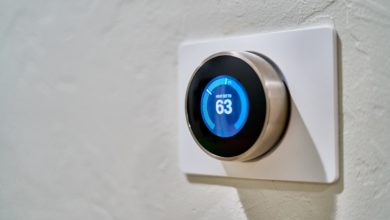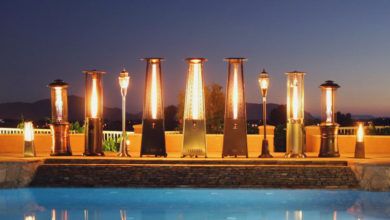It’s a frigid winter morning and your hardwood floors are giving you the cold shoulder again. Like what on earth have you done to deserve this other than to have two working feet? You step into the bathroom and with the heater on, you have the time of your life getting all toasty in your hot shower only to get a rude shock as you step on the bathroom tile like it’s some punishment for daring to have such a nice time in the showers.
Well, it can be really annoying and for many, the next port of call is to get their homes a nice heated floor that will help them cruise through the winter with all that warm “toastiness” that they love. Yes, it does cost a pretty penny but considering the obvious, heated floors might actually turn from luxury items to items of necessities real quick in the face of brutally cold floors.
We do agree with this fact but recently, we also got curious about heated floors too and decided to go digging and find out if they are the best options to resort to when faced with cold floors. The result of that research is what we bring to you in this article. Here, we will be discussing if it would really be worth it to install a heated floor in your home, with reasons for whatever answer we get. Because of how big of a deal installing a heated floor is, you might want to ensure that it is the best solution for your own home before you decide on it. Yes, it was great for the Roman Empire but till you get to Rome, hold off a little on behaving like a Roman and read this article first before you decide on a heated floor.
Arguments for the Heated Floor
For the proponents of in-floor heating systems, their major reason is that they claim it’s more efficient, energy-wise. In all sincerity, there are quite a number of reasons that support that fact even though many of them aren’t scientifically proven. So, yeah, a heated floor may be more favorable to your utility bill than the more traditional HVAC systems.
But just when are heated floors the perfect solution?
Now, first off, let’s understand how heated floors work. Heated floors have a similar operation to cooling systems and furnace-based heating systems. So in either of these systems, what happens is the air is heated first of all and after that, via a fan, it is impelled (blown) through some ducts. These ducts then empty the air into your rooms via dampers and vents.
Definitely, in the process of circulating air around the various rooms, some amount of heat will get lost inevitably. In rooms where vents are closer to the ceiling than the floor, the lost air compounds. Recall the simple laws of physics: hot air will only fall if it loses energy in form of heat, otherwise it rises. So, this is how your room gets warm.
Heated floors follow this general principle but here’s what makes them different from HVAC systems. The whole surface of the floor uniformly distributes heat such that the lower part of a room is heated. This makes the occupants of the room experience warmth but at a lower general temperature than a traditional heating system. In some cases, the difference could even be up to 5 degrees Fahrenheit lower.
So, invariably, heated floors will provide their owners a new level and mode of comfort that HVAC systems cannot.
This ultimately helps our eco-footprint, because the more comfortable we feel, the less inclined we are to turn down our thermostat. This, in turn, helps us to save energy.
Comfort aside; let’s move on to more quantifiable things like heated floors and their cycling properties. Because they regulate themselves (go off and on) less often in comparison to HVAC systems, they utilize less energy. Here’s how it works. If the system doesn’t have to reset itself and then ramp itself up almost every time, it means that it will spend less energy. And this is good news, yeah? Correct.
In-floor heating systems, also known as radiant systems, also give homeowners a wide variety to choose from. They work with almost any energy source from natural gas to electricity to solar, even to geothermal energy sources. You might not know but furnace systems are quite dicey because they can only use one energy source: heating oil. If anything happens and the market goes volatile, the price could get hiked and you might have to spend a lot of dollars to keep your home warm no matter how low your thermostat is set.
Again, going for the more efficient option of a heated floor could attract some government aid to your site which could help you cover contractor costs. These costs do not come cheap, we tell you.
Heated floors do not come with some of the problems that furnace systems come with. For instance, since they don’t work with ducts and fans, they can help to reduce the spread of allergens as well as dust. So, they do have their health benefits.
Also, with heated floors, you can always scale to meet your specific needs. You don’t have to install them everywhere in your home if you don’t want to.
So, yeah, it’s been good news all the way, but it’s not all sunshine and rainbows with heated floors, there are still some cons you should know about when it comes to radiant systems.
Arguments against Heated Floors
In a home where ceilings are high and windows are many or a place where insulation is insufficient, a heated floor might not get you to that level of comfort you’re otherwise used to. If you could just do a home energy audit instead, you might find out what adjustments you need to make to your HVAC system to give you that comfort that you seek instead of going for heated floors because heating the floors as opposed to heating the air might not help you.
If the main reason you want to get heated floors is that it will help you save on your utility bills, then try other solutions like solar panels or system zoning because they just might be more cost-effective at the end of the day. After conducting a research on 50 homeowners in Nova Scotia, the Canada Mortgage and Housing Corporation found out that those with heated floors did not necessarily lower their thermostats settings when compared to those without.
Also, there is no evidence that in-floor heating systems affect the value of a property either negatively or positively. There are so many other variables that a realtor has to factor in for him/her to conclusively say that in-floor heating systems have the ability to add value to a property or otherwise. But then if the potential owners are “green people” then they might consider paying slightly higher for a home with an in-floor heating system.
Another thing you want to consider is the cost of repairs. If it ever gets broken, fixing it up might be very difficult and expensive. Plus, your floors must be removed for the situation to even be assessed in the first place.
And then again, radiant systems are hydronic which means that there is a good potential of having leaky pipes in the future. With water getting under your house, you run the risk of weakening the foundation and inviting pests such as termites to ruin your hardwood floors and carpeting.
At the end of the day, is installing a heated floor worth it? Well, it’s up to you. If you need it as a stand-alone project, maybe not but if what you’re considering is a major remodel and you have your budget and priorities straight, then why not?





